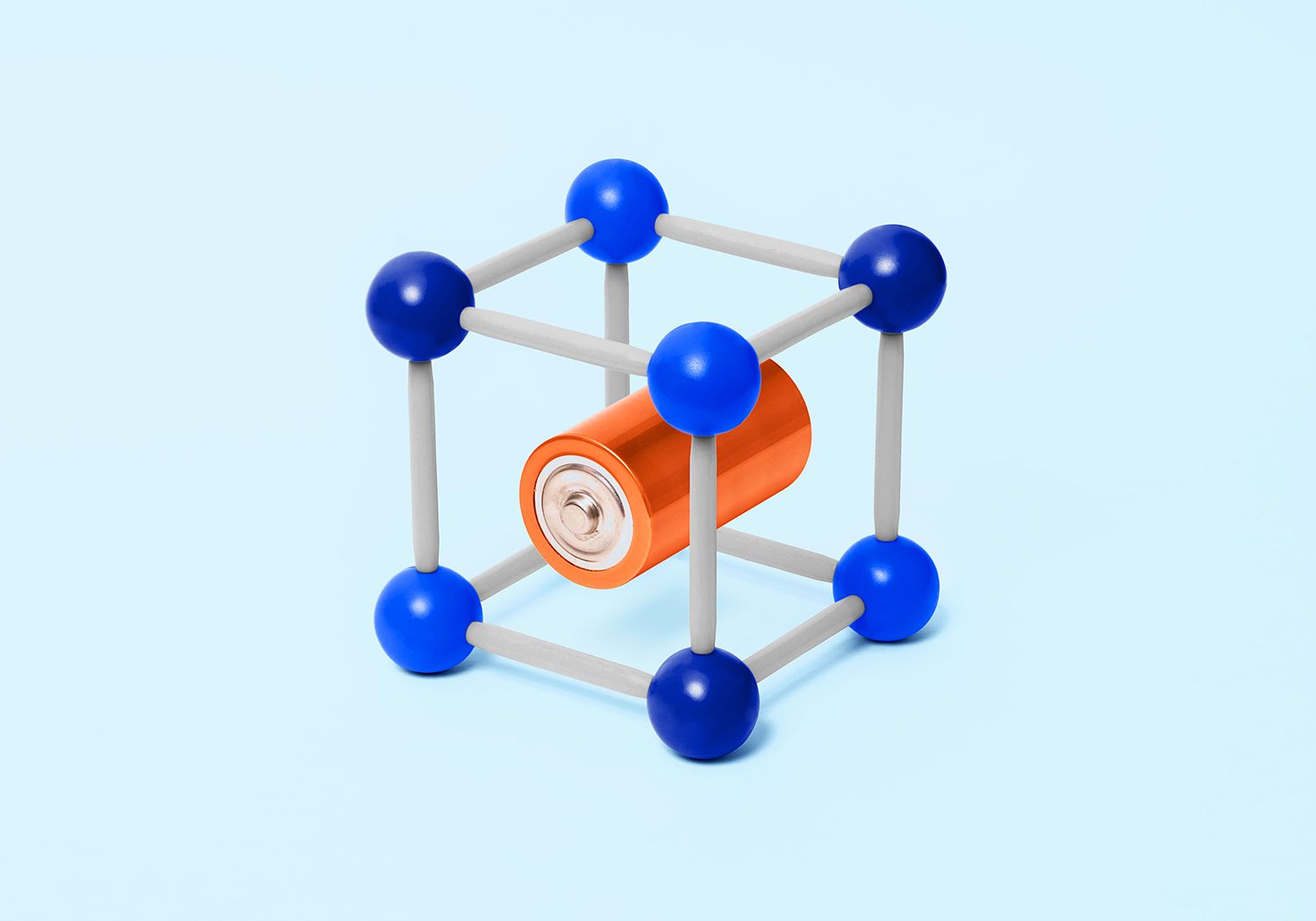NAD+ is essential to the creation of energy in the body and the regulation of pivotal cellular processes. Here’s why it’s so important, how it was discovered, and how you can get more of it.


NAD+, or nicotinamide adenine dinucleotide, is a critical coenzyme found in every cell in your body, and it’s involved in hundreds of metabolic processes. But NAD+ levels decline with age. NAD+ has two general sets of reactions in the human body: helping turn nutrients into energy as a key player in metabolism and working as a helper molecule for proteins that regulate other cellular functions. These processes are incredibly important.
How NAD+ Is Powerful
Open any biology textbook and you’ll learn about NAD+, which stands for nicotinamide adenine dinucleotide. It’s a critical coenzyme found in every cell in your body that’s involved in hundreds of metabolic processes like cellular energy and mitochondrial health. NAD+ is hard at work in the cells of humans and other mammals, yeast and bacteria, even plants.
Scientists have known about NAD+ since it was first discovered in 1906, and since then our understanding of its importance has continued to evolve. For example, the NAD+ precursor niacin played a role in mitigating pellagra, a fatal disease that plagued the American south in the 1900s. Scientists at the time identified that milk and yeast, which both contain NAD+ precursors, alleviated symptoms. Over time scientists have identified several NAD+ precursors — including nicotinic acid, nicotinamide, and nicotinamide riboside, among others — which make use of natural pathways that lead to NAD+. Think of NAD+ precursors as different routes you can take to get to a destination. All the pathways get you to the same place but by different modes of transportation.

Recently, NAD+ has become a prized molecule in scientific research because of its central role in biological functions. The scientific community has been researching how NAD+ relates to notable benefits in animals that continue to inspire researchers to translate these findings to humans. So how exactly does NAD+ play such an important role? In short, it’s a coenzyme or “helper” molecule, binding to other enzymes to help cause reactions on the molecular level.
But the body doesn’t have an endless supply of NAD+. In fact, it actually declines with age. The history of NAD+ research, and its recent establishment in the science community, has opened the floodgates for scientists to investigate maintaining NAD+ levels and getting more NAD+.

What is the History of NAD+?
NAD+ was first identified Sir Arthur Harden and William John Young in 1906 when the two aimed to better understand fermentation — in which yeast metabolize sugar and create alcohol and CO2. It took nearly 20 years for more NAD+ recognition, when Harden shared the 1929 Nobel Prize in Chemistry with Hans von Euler-Chelpin for their work on fermentation. Euler-Chelpin identified that the structure of NAD+ is made up of two nucleotides, the building blocks for nucleic acids, which make up DNA. The finding that fermentation, a metabolic process, relied on NAD+ foreshadowed what we now know about NAD+ playing a critical role in metabolic processes in humans.
Euler-Chelpin, in his 1930 Nobel Prize speech, referred to NAD+ as cozymase, what it was once called, touting its vitality. “The reason for our doing so much work on the purification and determination of the constitution of this substance,” he said, “is that cozymase is one of the most widespread and biologically most important activators within the plant and animal world.”
Otto Heinrich Warburg — known for “the Warburg effect” — pushed the science forward in the 1930s, with research further explaining NAD+ playing a role in metabolic reactions. In 1931, the chemists Conrad A. Elvehjem and C.K. Koehn identified that nicotinic acid, a precursor to NAD+, was the mitigating factor in pellagra. United States Public Health Service Doctor Joseph Goldberger had previously identified that the fatal disease was connected to something missing in the diet, which he then called PPF for “pellagra preventive factor.” Goldberger died before the ultimate discovery that it was nicotinic acid, but his contributions led to the discovery, which also informed eventual legislation mandating the fortification of flours and rice on an international scale.
The next decade, Arthur Kornberg, who later won the Nobel Prize for showing how DNA and RNA are formed, discovered NAD synthetase, the enzyme that makes NAD+. This research marked the beginning of understanding the building blocks of NAD+. In 1958, the scientists Jack Preiss and Philip Handler defined what’s now known as the Preiss-Handler pathway. The pathway shows how nicotinic acid — the same form of vitamin B3 that helped cure pellagra — becomes NAD+. This helped scientists further understand the role of NAD+ in the diet. Handler later earned the National Medal of Science from President Ronald Reagan, who cited Handler’s “outstanding contributions to biomedical research…furthering the state of American science.”
While scientists had now realized the importance of NAD+, they had yet to discover its intricate impact on a cellular level. Forthcoming technologies in scientific research combined with comprehensive recognition of the coenzyme’s importance ultimately encouraged scientists to continue studying the molecule.
The Nuance of NAD+
Our current understanding of the importance of NAD+ really began in the 1960s. Using nuclear extracts from hen liver, French scientist Pierre Chambon identified a process called Poly ADP-ribosylation, where NAD+ is broken down into two component parts, one of which (nicotinamide) gets recycled, while the other (ADP-ribose) meets up with a protein. This research formed the foundation of the field of PARPs, or poly (ADP-ribose) polymerases, a group of proteins that rely on NAD+ to function and perform cellular functions. PARPs are similar to another group of proteins called sirtuins in that they both only function in the presence of NAD+.
Scientists often refer to sirtuins as “guardians of the genome” for their role in regulating cellular homeostasis. Homeostasis involves keeping the cell in balance. Sirtuins are a group of proteins that were first discovered in the 1970s but their dependence on NAD+ wasn’t realized until the 1990s. Elysium co-founder and MIT biologist Leonard Guarente identified that SIR2, a sirtuin in yeast, extended the life of the yeast only when it was activated by NAD+.
“Without NAD+, SIR2 does nothing. That was the critical finding on the arc of sirtuin biology,” Guarente said.
Knowing this created a clear link between sirtuins and metabolism. It also clued scientists in on a crosstalk between biological functions, i.e., that metabolism is intricately related to other biological processes. Additionally, it inspired more research on a topic previously overlooked.
“There are maybe 12,000 papers on sirtuins now. At the time we discovered the NAD+ dependent deacetylase activity the number of papers was in the 100s,” Guarante’s said.
Humans get NAD+ from their diet via foods made up of amino acids that are also precursors to NAD+. However, NR is a highly efficient precursor to NAD+. If NAD+ precursors are different routes you can take to get to a destination, NR is often thought to be the best available route to NAD+.
Scientists worked toward creating a better NAD+ supplement, thinking outside the diet to access it. The fact that NR is thought of as a highly efficient way to boost NAD+ raised the question: We know what NAD+ can do, but how do we get more of it?
The Future of NAD+
For nearly 100 years, NAD+ has been incredibly important, but the gradual pace of scientific research and technological development has only now begun to reveal how it can be utilized.
Knowing the history of NAD+ and subsequent discoveries around the coenzyme has led researchers to explore what the science community can now do with the information. NAD+ has enormous potential and how it will be fulfilled is the most exciting aspect of current research.
A human study from 2017, conducted by Elysium Health, found that daily doses of an NAD+ precursor increased NAD+ levels by an average of 40 percent. Recent studies evaluating the effects of NAD+ precursors in animals show promise, but to date there is not yet evidence that these animal studies can be extrapolated to humans.
Next Up:
The idea of “boosting” your immune system is an understandably appealing concept—who wouldn’t want a supercharged immune system that goes above and beyond to keep you healthy? The reality, however, is a bit more complex.
The Hayflick Limit suggests that a normal human cell can replicate and divide roughly fifty times before it cannot divide anymore. With cellular senescence, the cell loses the ability to multiply before it reaches that limit.
Autophagy is a process where non-functional or unnecessary cells are removed and recycled so healthy new ones can be built. This “cellular housekeeping” is crucial for immune health and the body’s ability to respond to immune aging.
